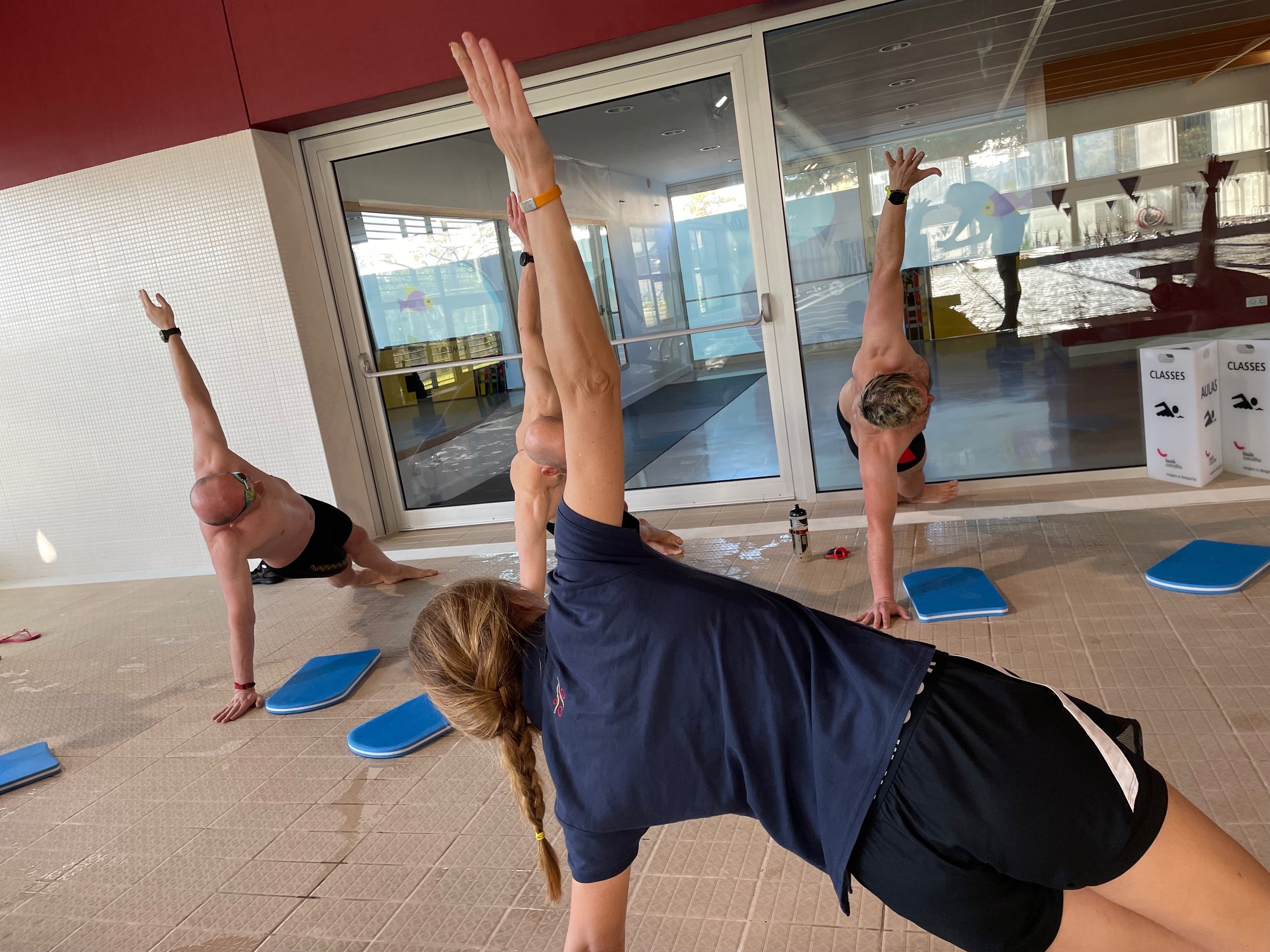Do all triathletes need strength and conditioning?
In this article, coach Philip looks at a classic area that people resort to in the off-season: Strength and Conditioning. If everyone turns to it in the off-season, is it applicable to all athletes? What about athletes who are new to the sport?
A core principle of our coaching is strength and conditioning, supporting endurance training. Athletes rarely slow down due to a lack of maximum speed or power. Instead, they lose form and slow down. As a result, everyone can benefit from strength and conditioning. Does that mean everyone should do it? Also, what does doing strength and conditioning even look like?
It’s commonly accepted that strength and conditioning is a performance enhancer. If you can get stronger, more stable and more efficient in your movement, your economy improves, and you get faster (or slow down less). For well-trained athletes, or those looking to perform to a high level, it will appear in your training schedule, not just in the off-season, but should be present at all points in the season.
For newer athletes or those who haven’t seen an Olympic bar, let alone lifted one, this can be a daunting thought, and often people shy away from strength work in favour of more swimming, cycling and running.
There is some logic in this. After all, if you want to get better, doing more is a way of improving, but you can't keep doing more! For athletes who have done their sport for a while, this approach has diminishing returns, and as a result, they do more strength and conditioning to gain an edge. This leads to the conjecture that S&C is for advanced or experienced athletes.
Why novice athletes shouldn’t shy away from strength and conditioning
The problem with the above is that list experienced athletes have some form of injury history or weakness that they now need to work on. They use strength and conditioning to mitigate that imbalance and have to work hard to change their grooved movement pattern.
It takes a lot of work to change the way the body moves if it is used to moving in a set pattern. A novice athlete has an advantage. They can start learning the correct movement through strength and conditioning work which will mean they are less likely to pick up the overuse injuries that the more experienced athlete is fighting.
Conditioning then strength
The reversal of the words is a big deal. Strength can be daunting, especially for those who envisage bending bars and ripped bodies. The truth of the matter is that all that begins with conditioning work. Basic, often simple movements that enable correct function. This can make a world of difference in performance. For example, conditioning could be working on shoulder flexibility or hip openers. A novice athlete who hasn’t spent any time swimming and loads of time at a desk will have limited shoulder mobility. This will limit them in two ways. Firstly, they won't have the mobility to do "correct" (whatever that means) technique, and secondly, they will tire quicker. Check out this video from our lockdown series of indoor swimming sessions.
Conditioning can be so much more than “strength”, but unfortunately, it plays the bridesmaid given the position in the phrase. Conditioning is the part which enables good biomechanics and unlocks technique. Conditioning can be stability work, trunk control, range of motion and some strength at the end. Conditioning is all the activities that go alongside our sports and help us remain uninjured, moving efficiently and staying effective with the engine that we have.
Given all that, should a novice do Strength and Conditioning? Well, it should be a resounding “Yes!” However, they should do it in a way that supplements doing “more” - in other words, not limit their enjoyment or ability to do a bit more of their sports. After all, they will learn more about swimming by getting wet than by stretching their shoulder. Therefore, adding a few minutes of focussed conditioning work before, during or after their training session will pay dividends later.
For example: before a run session, spend 5 minutes doing 2 mins of trunk activation by doing some planks, doing some calf raises on each leg (both straight and bent leg) and doing some glute activation exercises (frog squeezes). This can go before your ordinary run session (whatever that is), but if you are doing some intervals, you could do balance exercises in the rest intervals! Finally, afterwards, you could spend 5 mins stretching out your hip flexors and calves or rolling your feet. By adding similar conditioning focuses to your sessions, you can keep them fun and sport-specific but raise the glass ceiling that most experienced athletes have had to break through after an injury.
Then you can worry about the strength if you want to. Actually, a lot of athletes really enjoy the heavier, strength work as it changes things around from the normal swim, bike and run training. Dislocating the phrase probably works better to introduce the concept to athletes, but as you become more comfortable, then you can merge the phrase together. Strength can be bending Olympic Bars, but it can also be a lot less than that – it can be lighter weights or more stable movements, all of which are accessible to newer athletes or those who haven't done S&C before.

Philip is the founder of Tri Training Harder LLP. He’s a British Triathlon Level 3 coach, and has been coaching for over a decade and is involved with mentoring and developing other coaches.
Philip has have coached athletes to European and World AG wins, elite racing, many Kona qualifications, IRONMAN podiums and AG wins.
Alongside the conventional development through many CPD courses, he has also been fortunate enough to work alongside experts in the fields of Physiotherapy, Strength and Conditioning, Nutrition, Psychology, Biomechanics, Sports Medicine. Putting this knowledge into practice he has worked with thousands of athletes to various degrees, from training camps in Portugal and around Europe, clinics in the UK and online coaching.
Visit Philip's
Coach profile
We’re here to help
Tri Training Harder are one of the leading Triathlon coaching providers in the UK, using our wealth of experience to unite scientific and technological research with already well-established and successful best practices, to create a formula for triathlon and endurance coaching that works.
The result is an honest, dynamic, yet simple new way of constructing an athlete’s training to allow them to reach their potential.
If you’re planning your next season, just starting out in the sport or are looking for extra guidance at the very top end of the field, we are here to help, and our coaches would be delighted to hear from you. You can contact us via the website, and one of the team will be in touch.

